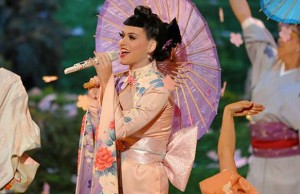On Monday, October 27, La Alianza Latina, Native Americans at Dartmouth, the Pan Asian Council, the Afro-American Society, Dartmouth Spectra, and the Inter-Community Council hosted a panel discussion on cultural appropriation. The panel began with a brief slideshow that defined cultural appropriation as taking elements of another culture, especially a minority group’s culture, while delineating the difference between cultural exchange (which is supposedly mutual) and appropriation. The presentation also featured examples of purported cultural appropriation, such as Katy Perry dressed as a geisha.
The actual panel featured three speakers: a student of American Indian ancestry, one of Mexican and Colombian ancestry, and another of Korean ancestry. Panelists attempted to draw the line between cultural appropriation and appreciation, emphasizing how appreciation involves actually understanding and respecting a culture rather than simply using its images. In addition, panelists recalled experiences in which they were felt uncomfortable because their culture was appropriated.
The catalyst for the panel was Halloween, which tends to involve students wearing questionable costumes (culturally significant or not) and exercising poor judgment in general. The panelists discussed how to ascertain whether a Halloween costume is appropriate or not, with each panelist offering a different perspective and way of approaching the issue. They also discussed methods for addressing someone wearing a costume that is culturally appropriative, and suggestions ranged from pulling the offender aside and explaining the issue to them to walking away from a potentially confrontational situation and reporting it.
Audience members also asked questions and participated vigorously in the discussion. For example, one audience member asked why people in Japan can wear jeans while Americans would be culturally appropriating if they wore kimonos, to which several participants in the room discussed “power structures” extensively as figuring into cultural appropriation. The economic oppression of cultural appropriation, whereby this alleged phenomenon does not benefit the people whose culture is being used, was also mentioned. Another participant, although generally sympathetic to those who decry cultural appropriation, expressed his displeasure at the College administration for not allowing his fraternity to host a Canada Day barbecue despite the fact that the event was planned by Canadians.
Much of the panel discussion involved trying to pinpoint a potential litmus test for cultural appropriation, with the audience repeatedly asking questions that led back to the topic. All in all, this proved to be an utterly useless thought exercise, as there is no final arbiter or set standard for what constitutes cultural appropriation. Furthermore, the existence of cultural appropriation, which is predicated on the ambiguous concept of cultural ownership, is questionable in and of itself. It seems to be more prudent to simply exercise some common sense and approach situations without an intent to offend.


Be the first to comment on "Inter-Community Groups Host Cultural Appropriation Panel"